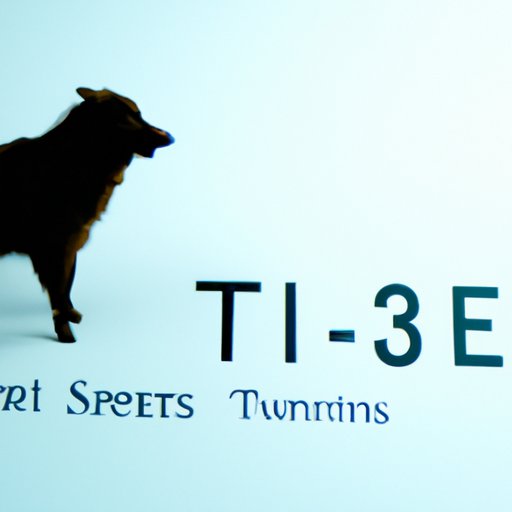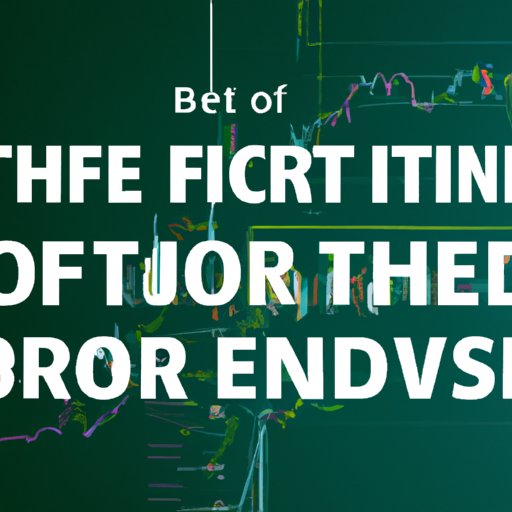Introduction
Exchange-traded funds (ETFs) have become increasingly popular with investors due to their low cost, diversified portfolios, and ease of access. ETFs are funds that track the performance of an index or basket of assets, such as stocks, bonds, commodities, and currencies. They provide investors with a way to gain exposure to the markets without having to buy and sell individual stocks or bonds. ETFs are usually traded on exchanges like stocks, making them a convenient and accessible investment choice.
In this article, we will explore the basics of ETFs, the top 10 ETFs to watch in 2021, the reasons why ETFs are the right investments for you, how to pick the best ETF for your needs, a comprehensive guide to ETF investing, and the benefits of ETF investing for beginners. By the end of this article, you should have a better understanding of ETFs and be able to make an informed decision about which ETF is right for you.
Investing 101: Choosing the Best ETF for Your Portfolio
When it comes to investing, there are many different types of exchange-traded funds (ETFs) available. Each ETF has its own unique characteristics, so it’s important to understand the differences between them before deciding which one is right for you. Here are some key points to consider when choosing an ETF.
Understanding the Different Types of ETFs
There are four main types of ETFs: equity ETFs, bond ETFs, commodity ETFs, and currency ETFs. Equity ETFs invest in stocks and can be used to gain exposure to specific sectors, countries, or regions. Bond ETFs invest in bonds, such as government bonds, corporate bonds, and mortgage-backed securities. Commodity ETFs invest in commodities, such as oil, gold, silver, and agricultural products. Currency ETFs invest in foreign currencies.
Examining the Fees Associated With ETFs
Before investing in an ETF, it’s important to understand the fees associated with it. ETFs typically have two types of fees: an annual management fee and a trading commission. The annual management fee covers the costs associated with managing the fund. The trading commission is the cost of buying or selling shares of the ETF. It’s important to compare the fees associated with different ETFs before investing.
Selecting the Right ETF to Fit Your Goals
When selecting an ETF, it’s important to consider your investment goals. Are you looking for long-term growth or short-term gains? Do you want to invest in a specific sector or region? Are you looking for income or capital appreciation? Once you have determined your goals, you can begin researching ETFs that meet your criteria.

Top 10 ETFs to Watch in 2021
With the new year comes new opportunities for investing. Here are 10 of the top ETFs to watch out for in 2021.
Overview of the 10 ETFs
- Vanguard Total Stock Market ETF (VTI)
- iShares Core S&P 500 ETF (IVV)
- Vanguard Real Estate ETF (VNQ)
- iShares U.S. Treasury Bond ETF (GOVT)
- SPDR Gold Shares ETF (GLD)
- Invesco QQQ Trust ETF (QQQ)
- iShares MSCI Emerging Markets ETF (EEM)
- Vanguard FTSE All-World ex-US ETF (VEU)
- iShares Core High Dividend ETF (HDV)
- Vanguard Short-Term Bond ETF (BSV)
Pros and Cons of Each ETF
Each of these ETFs has its own set of pros and cons. For example, VTI is a good choice for long-term investors who are looking for broad market exposure, while IVV is a good choice for investors who want to invest in large-cap U.S. stocks. GOVT is a good choice for investors who want to invest in U.S. Treasuries, and GLD is a good choice for investors who want exposure to gold. On the other hand, EEM is a good choice for investors who want to invest in emerging markets, and HDV is a good choice for investors who want to invest in high dividend-paying stocks.
5 Reasons Why ETFs Are the Right Investment for You
ETFs offer a number of advantages over other types of investments. Here are five reasons why ETFs are the right investment for you.
Diversification
One of the biggest advantages of ETFs is that they provide investors with instant diversification. With a single ETF, you can gain exposure to hundreds of different stocks, bonds, or other assets. This reduces your risk by spreading it across multiple asset classes.
Low Cost
ETFs also tend to have lower fees than other types of investments. Many ETFs have annual management fees of 0.20% or less, compared to the 1.00%-2.00% fees charged by mutual funds. This makes ETFs a more cost-effective option for investors.
Liquidity
ETFs are also highly liquid investments. Because they are traded on exchanges like stocks, they can be bought and sold quickly and easily. This makes it easy to move in and out of positions without incurring large transaction costs.
Tax Efficiency
ETFs are also tax efficient investments. Since ETFs are structured as open-ended funds, they do not have to pay out dividends or capital gains every year. This means that investors can defer taxes on their gains until they sell their shares.
Professional Management
Finally, ETFs are professionally managed investments. Most ETFs are managed by experienced professionals who use sophisticated strategies to maximize returns. This helps ensure that your investments are well diversified and managed according to your risk tolerance.

How to Pick the Best ETF for Your Needs
Once you have decided to invest in ETFs, the next step is to choose the right ETF for your needs. There are several factors to consider when selecting an ETF.
Considering Your Risk Tolerance
The first step is to assess your risk tolerance. ETFs come in a variety of risk levels, from conservative to aggressive. Consider your investment goals and time horizon when determining the level of risk you are comfortable taking.
Evaluating the Expense Ratios
It’s also important to evaluate the expense ratios of the ETFs you are considering. Expense ratios are the fees charged by the ETF for management and administrative expenses. Lower expense ratios mean that more of your money is going towards investments rather than fees.
Analyzing Past Performance
Finally, it’s important to analyze the past performance of the ETFs you are considering. Look at the total return, volatility, and other metrics to get an idea of how the ETF has performed over time.
A Comprehensive Guide to ETF Investing
ETFs are a great way to diversify your portfolio and gain exposure to different asset classes. To help you get started, here is a comprehensive guide to ETF investing.
Strategies for Investing in ETFs
When investing in ETFs, it’s important to develop a strategy that fits your risk tolerance and investment goals. Consider your time horizon and the type of return you are expecting. Also, consider whether you want to focus on a particular sector or region.
Understanding the Risks of Investing in ETFs
It’s also important to understand the risks associated with ETFs. Like any investment, ETFs carry the risk of loss. Be sure to research the ETFs you are considering and understand the risks associated with each one.
Exploring the Different Types of ETFs Available
Finally, it’s important to explore the different types of ETFs available. As mentioned above, there are four main types of ETFs: equity ETFs, bond ETFs, commodity ETFs, and currency ETFs. Each type has its own set of pros and cons, so it’s important to do your research before investing.

Exploring the Benefits of ETF Investing for Beginners
ETFs offer a number of advantages for beginner investors. Here are some of the benefits of ETF investing for beginners.
Accessibility
One of the biggest advantages of ETFs is that they are very accessible. ETFs are traded on exchanges like stocks, so they can be bought and sold easily. This makes them an ideal choice for beginning investors.
Flexibility
ETFs also offer investors a great deal of flexibility. With a single ETF, you can gain exposure to hundreds of different stocks, bonds, or other assets. This allows you to diversify your portfolio without having to buy and sell individual stocks or bonds.
Transparency
Finally, ETFs offer a high level of transparency. Most ETFs provide detailed information about their holdings, fees, and past performance. This makes it easy for investors to understand exactly what they are investing in.
Conclusion
In conclusion, ETFs are a great way to diversify your portfolio and gain exposure to different asset classes. They offer low costs, diversification, liquidity, tax efficiency, and professional management. They are also highly accessible and transparent investments. When selecting an ETF, it’s important to consider your investment goals, risk tolerance, and the fees associated with the ETF. Finally, it’s important to understand the risks associated with investing in ETFs and to do your research before investing.
By following the tips outlined in this article, you can make an informed decision about which ETF is right for you. With the right ETF, you can begin building a diversified portfolio that is tailored to your needs and goals.
(Note: Is this article not meeting your expectations? Do you have knowledge or insights to share? Unlock new opportunities and expand your reach by joining our authors team. Click Registration to join us and share your expertise with our readers.)
